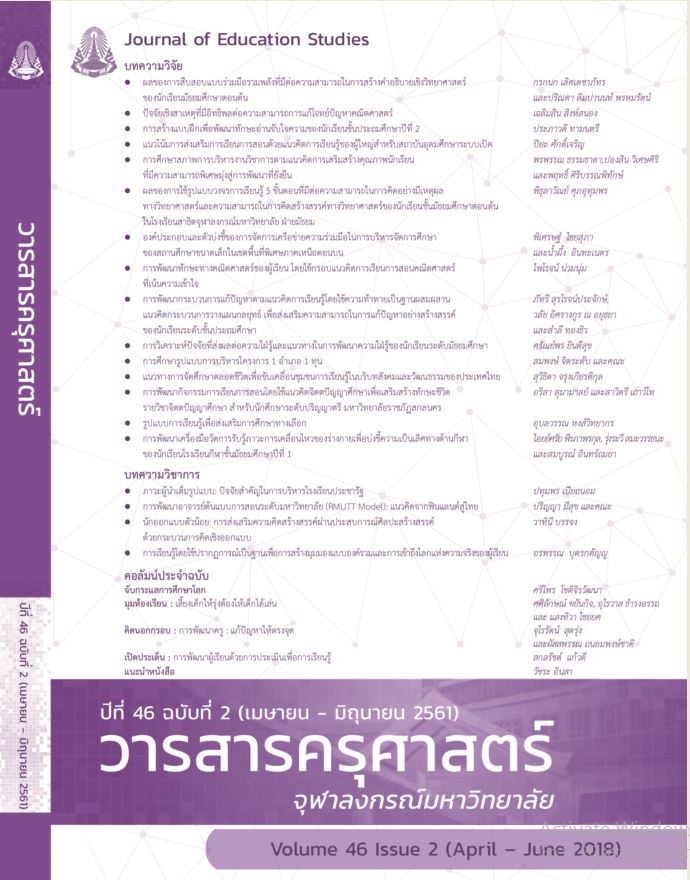องค์ประกอบและตัวบ่งชี้ของการจัดการเครือข่ายความร่วมมือในการบริหารจัดการศึกษา ของสถานศึกษาขนาดเล็กในเขตพื้นที่พิเศษภาคเหนือตอนบน
Keywords:
FACTORS AND INDICATORS, COLLABORATIVE NETWORK, SMALL-SIZED SCHOOLS, SPECIFIC AREAAbstract
Abstract
The research objectives were to explore the factors and indicators of collaborative network management for educational management of small-sized schools in specific upper northern areas. The research was divided into two steps as follows: Step 1 focused on the phenomenon of understanding and variables collected. The research instruments included a record of document analysis. In-depth interview recording form for 24 respondents of 4 Multiple-case Studies. The data were analyzed by content analysis and analytic induction for drafting the factors and indicators of collaborative network management for educational management of small-sized schools in specific upper northern areas. Step 2 focued on quality evaluation of factors and indicators. The research instruments included a focus group discussion recording form of 8 experts for checking for appropriateness and to order the magnitude of factors and indicators. And a criticism and connoisseurship recording form of 7 experts for checking about the content validity appropriateness and possibility of the factors and indicators. The data were analyzed by content analysis and analytic induction.
The research results found that the factors and indicators of collaborative network management for educational management of small-sized schools in specific upper northern areas via consensus of experts consisted of two main-factors, eight sub-factors and 35 indicators. The main-factors were: 1) an arrangement of the major components of collaborative networks consisting of six sub-factors, namely network members (4 indicators), network structure (3 indicators), purpose of network (4 indicators), communication systems and the interaction of networks (4 indicators), required resources in the network
(4 indicators), and required features for network members (5 indicators). The scope and functions of collaborative educational management consisted of two sub-factors:
1) development of academic efficiency (5 indicators) and development of academic support efficiency (6 indicators).




